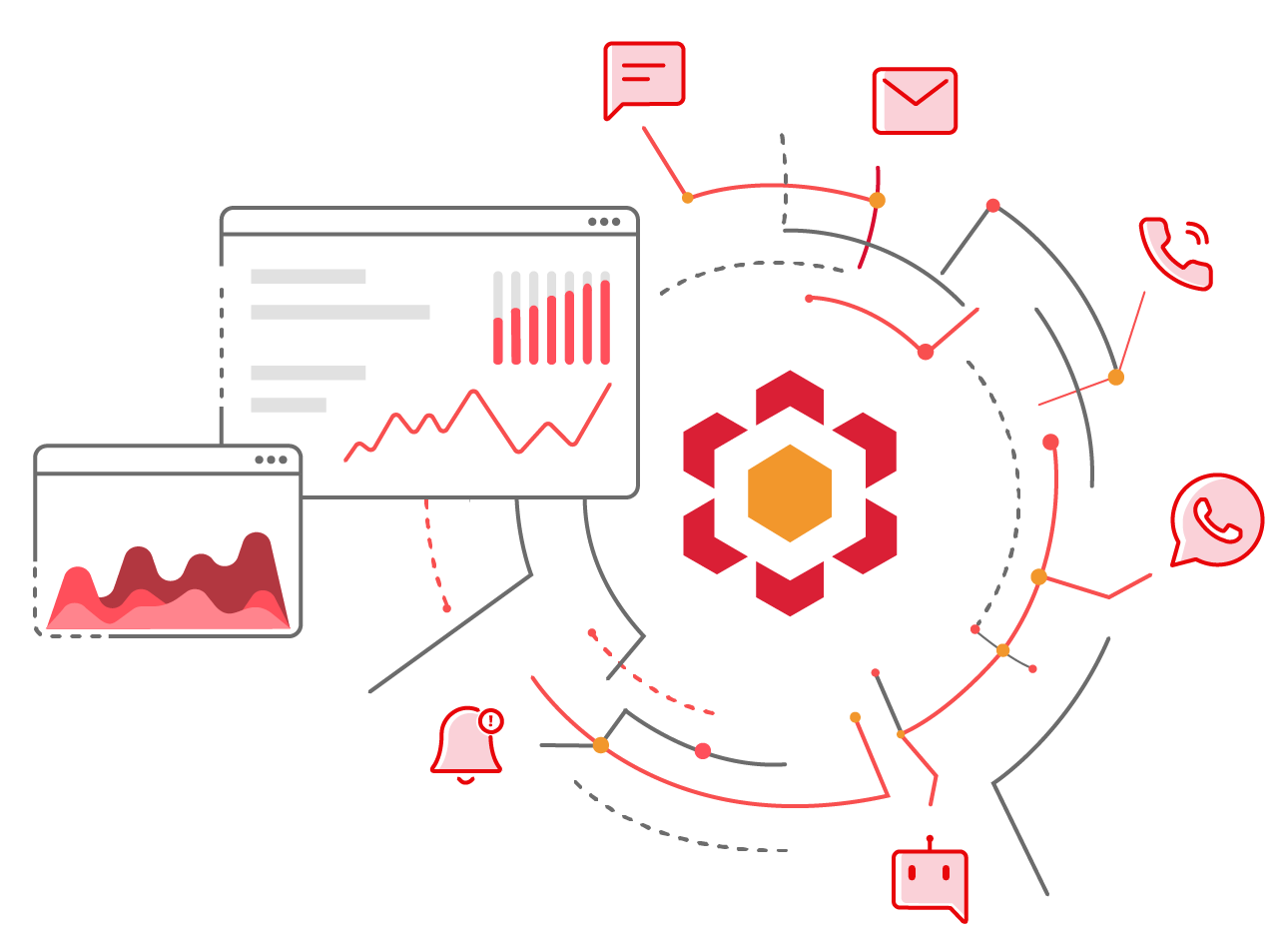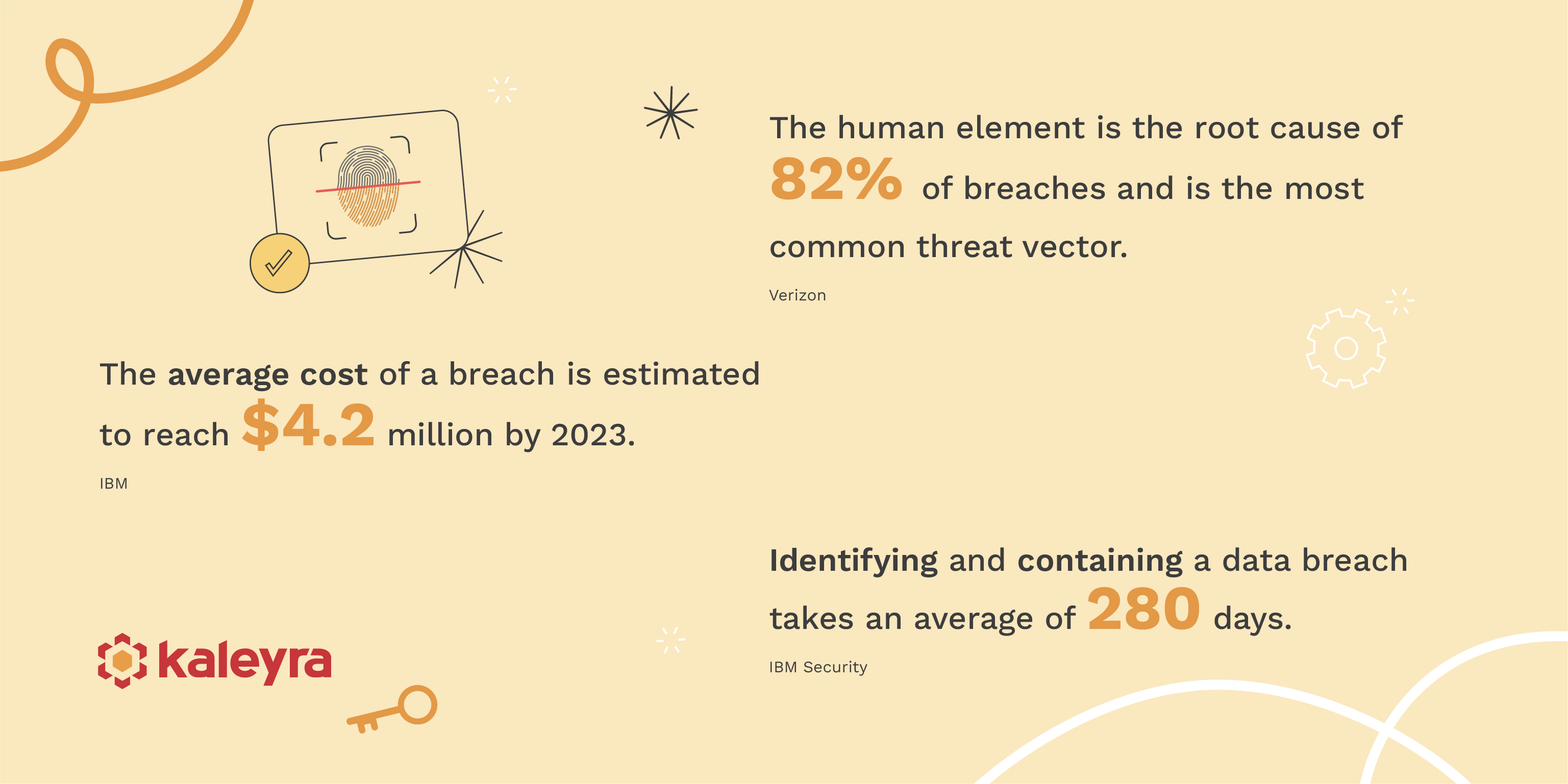
October is Cybersecurity Awareness Month! It’s the perfect time to focus on learning how to maintain a secure online presence in our interconnected world. With increasing reliance on technology, it’s imperative to safeguard our digital assets from cyber-attacks.
Jenna Brown, Senior Security Analyst at Kaleyra, shares a few Cybersecurity Awareness Month tips and ideas to help you stay informed of the latest trends and best practices for a safer digital environment.
Why is Cybersecurity Important?
The digital landscape is ever-evolving, as are the challenges cybercriminals pose. Data breaches caused by phishing and ransomware continue to make headlines, causing substantial financial and reputational damage to businesses. In the case of individuals, these breaches can lead to unauthorized access to personal data, financial losses, or even identity theft.
Cybersecurity is everyone’s responsibility, and each one of us can contribute to a more secure way of working. Staying informed and maintaining robust security protocols can significantly reduce cyber threats and mitigate potential damage.
Don’t Be a Weak Link!
Just one mistake can expose the company to a multitude of risks, including data breaches, loss of customer trust, and financial setbacks. So make sure you’re not the weak link in your organization’s cybersecurity chain.
Cybersecurity Statistics for 2023
Here are a few key statistics to keep in mind –
- Identifying and containing a data breach takes an average of 280 days (IBM Security).
- The average cost of a breach is estimated to reach $4.2 million by 2023 (IBM)
- A staggering 91% of cyber attacks start with a spear-phishing email (Deloitte)
- 45% of organizations worldwide will be impacted in some way by a supply chain attack by 2025 (Gartner)
- The human element is the root cause of 82% of breaches and is the most common threat vector(Verizon)
- Only 14% of SMBs are equipped to defend themselves, although 43% of attacks are aimed at these businesses (Accenture)
EBOOK
Multichannel Strategies for Growing eCommerce Brands
Learn how E-Commerce brands can effectively implement multiple platforms to propel growth, foster customer loyalty, and streamline their processes.


Cybersecurity Awareness Month Tips to Prevent Data Breaches
It’s essential to understand that not all data breaches are the same. They can range from sophisticated attacks to simple human errors. They include cyber attacks such as hacking, malware, or phishing and human errors that involve misconfigured settings or accidentally emailing sensitive data. Insider threats where the culprit can be someone within the organization can also cause data breaches.
Here are a few simple ways you can prevent data breaches –
Regularly Update Software: Outdated systems are a primary target for hackers, and patches often contain security updates that protect against known vulnerabilities. Automatic updates keep your computer and software updated to the latest versions.
Least-Privilege Access: Limit access rights for users to the bare minimum necessary to complete their job functions.
Educate and Train: Employees should be aware of what encompasses phishing and social engineering attacks. They should report immediately to the InfoSec team if they suspect a data breach or see unusual activity. Transparency is key; quicker action can minimize impact.
Use Strong, Unique Passwords for Different Platforms: Your password should have at least 12 characters, including symbols, numbers, and both upper and lower-case letters. Store your passwords in a secure password management software, and activate Multi-Factor Authentication (MFA) wherever possible.
VPN Usage: Using an Always-On VPN helps keep your network connections and data secure.
Safeguard Data: Implement Data Loss Protection (DLP) Tools to protect sensitive data from unauthorized distribution or accidental sharing.
Safeguard Personal Data: Personal data is like currency in today’s digital world. Protecting it is not only essential for your own security but also critical for safeguarding the integrity of our company. Be aware of unsolicited communications asking for personal information. During the first quarter of 2023, more than six million data records were exposed worldwide through data breaches (Statista). Make sure not to click on suspicious links or download unknown attachments.
Regularly Review Privacy and Security Settings on all Platforms. Be cautious when sharing personal information online. Information you share can be used in phishing attacks or identity theft. Limit the personal information you share online and check website security before entering sensitive data. Regularly check your financial and social accounts for suspicious activity.
Best Practices for Remote Work
Your home network is your first line of defense. Use strong encryption like WPA3 for your Wi-Fi.
Secure Your Router: Change your router’s default login and password to something strong and unique.
Clean Desk Policy: Keep your physical workspace free of sensitive information that someone could glean from a casual glance.
End-of-Day Security Check: At the end of each workday, log out of all applications and shut down your computer to minimize risks.
Security For Your Family!
Families, especially those with children or older generations who may not be as savvy about cybersecurity risks can take several steps to enhance the security of their data and devices.
Family Security Briefing: Have a simple, age-appropriate discussion about online safety and what to look out for, such as suspicious emails or links.
Parental Controls: Utilize parental controls on devices that your children use to limit the types of content they can access.
Unique Passwords: Teach everyone in the family the importance of using strong, unique passwords for different accounts and how to store them securely.
Home Network Security: Explain the importance of Wi-Fi security and why no one should share the Wi-Fi password with unknown visitors or neighbors.
Secure Smart Devices: If you have smart home devices like thermostats, doorbells, or lights, make sure they are secure and regularly updated.
Check App Permissions: Periodically review app permissions on all family smartphones and tablets.
Emergency Action Plan: Create a simple step-by-step guide for what to do if someone thinks they’ve clicked on a phishing link or exposed sensitive information.
Regular Software Updates: Make it a family routine to update software on all devices; perhaps make it a monthly family “clean-up” day.
By involving the whole family in maintaining cybersecurity, not only do you protect everyone, but you also make cybersecurity an ongoing discussion, helping to keep everyone vigilant.
The Latest Trends in Cybersecurity for Businesses
Here are the latest cybersecurity trends for 2023 –
Zero Trust Security Models: No internal or external user is trusted by default.
Extended Detection and Response (XDR): Implementation of enhanced endpoint security and improved threat detection.
AI and Machine Learning: Predictive analytics for threat detection and response. Using AI algorithms to predict and counteract potential cyber-attacks.
Cloud Security Posture Management (CSPM): Using tools to ensure cloud services are securely configured.
Remote Workforce Security: VPNs and endpoint security for distributed teams. With the rise of remote working, there’s a more significant emphasis on securing remote connections and endpoints.
Supply Chain Security: Protecting business operations from third-party vulnerabilities. Cybercriminals are targeting less-secure elements in the supply chain to breach larger organizations.
Security Automation: Automated responses to certain types of security incidents.
Password Management: The importance of strong, unique passwords, and the benefits of password managers.
Secure Communication: Ensuring that both internal and external communications are encrypted and secure.
Security Awareness Training: Organizations are ramping up their investment in training their employees on cybersecurity best practices.
Data Privacy Regulations Compliance: Adherence to GDPR, CCPA, and other regional data protection standards.
The cyber threat landscape has become more complex with the rapid adoption of smartphones, cloud computing, and the Internet of Things (IoT). Embracing cybersecurity as a year-round priority and regularly following good cyber hygiene is now more critical than ever. Educating ourselves about the latest trends and preventive measures empowers us to strengthen our digital security and outsmart cyber threats.

Jenna Brown
Senior Security Analyst, Kaleyra
Supercharge Your Communication!
Get in touch with our experts who strive hard to bring the very best in cloud communications technology to you.

